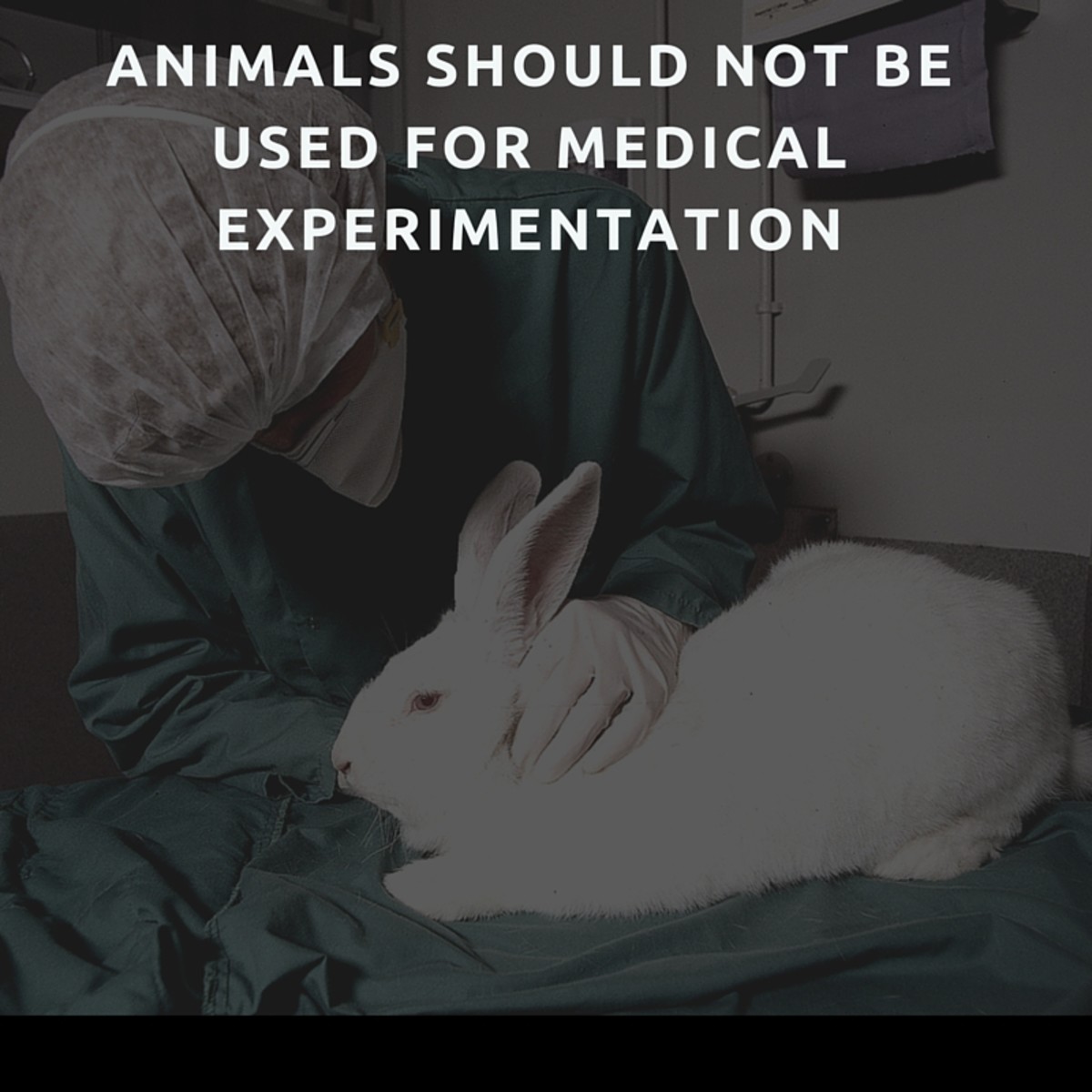Dog's Best Friend? The Ethics of Animal Testing

** WARNING: THIS HUB CONTAINS SOME DISTURBING CONTENT, HOWEVER NO DISTURBING IMAGES ARE PUBLISHED HERE, ALTHOUGH SOME MAY BE LINKED **
Dogs are said to be "man's best friend", but does the opposite also hold true? By the end of this hub, you may be convinced beyond doubt that the answer to that question is "no".
In the name of 'medical research' or 'testing', animals of all kinds, in their millions around the world, are subjected to a wide range of cruel, painful and harmful experiments and procedures that almost always lead to the animal being eventually euthanised.
Can we continue to justify doing this to animals?
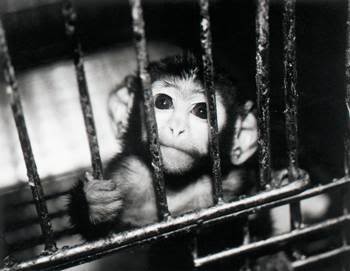
The question is not, "Can they reason?" nor, "Can they talk?" but rather, "Can they suffer?"
— Jeremy Bentham (philosopher)How are animals used for testing, and who does it?
A wide range of live animals (mostly warm-blooded vertebrates such as mice, rats, monkeys, dogs, rabbits, cats, pigs, sheep and guinea pigs) are used mainly for the following types of testing and experimentation (note: the first three on the list are covered in this hub):
- Medical research into bodily processes and diseases;
- Toxicity, efficacy and other testing of new and proposed pharmaceuticals before they are allowed on the market;
- Toxicity testing for pesticides, fungicides, household cleaners, chemicals, cosmetics, and a wide range of other consumer products;
- Testing by the military of new warfare and weapons systems (not discussed in this hub)
- Dissection in schools and universities for teaching/learning purposes -animals such as Cats, frogs, fetal pigs, grasshoppers, mink, earthworms, rats, mice, dogs, pigeons, and turtles (not discussed in this hub)
Provided this testing is done under an approved "research protocol", it's entirely legal to do things to live animals that in any other context would be considered animal torture or cruelty. In some cases (such as pharmaceutical development), animal testing is not only permitted - it's mandatory. To get a new drug onto the American market for example, it must first be tested and found to be safe on two animal species - rodents and one non-rodent species (usually dogs or cats).
Research animals are often published in catalogues (a bit like lab equipment), and can be sourced from pounds, animal dealers, third world countries, or specialist breeding facilities.
However there are legal restrictions on what can be done and in what circumstances. U.S. laws (the Animal Welfare Act 2013) requires that alternatives must be considered before using animals for research and testing. The Public Health Service (PHS) Policy on Humane Care and Use of Laboratory Animals addresses the use of animals by NIH grantees and within NIH and other institutions under the Public Health Service. The PHS Policy requires that proposals justify the animal use, the number of animals to be used, and the specific procedures to be used
COMMON TESTS
Common tests performed on animals include:
- Eye or skin irritancy (Draize test): Dripping chemicals and toxic substances into the eyes and onto the abraded skin of rabbits, mice, cats and other animals to determine their toxicity and irritant level (and potential to cause irreversible damage).
Animals used: Rabbits.
- Acute toxicity testing. Forcing animals to ingest or inhale toxic substances until they become sick and die (the LD 50 toxicity test), or until they display certain symptoms of stress or illness. During these tests, animals will often endure excruciating pain, convulsions, loss of motor function, and/or uncontrollable seizures. The animals are killed at the end of the test so that a necropsy can be performed to determine internal damage.
Animals used: Rats and mice are the animals most often used in acute toxicity testing.
- Repeat dose toxicity testing. Repeated dose toxicity is used over a 28 day or 90 day period to evaluate chronic toxic effects, primarily effects on various organ systems, and to establish a no-observed-effect-level (NOEL)- initially in rodents. Some agencies may also require these tests to be completed in a non-rodent species such as dogs or for longer periods of time. Animals are evaluated during the test period and then killed at the end to look for signs of organ or body system damage.
Animals used: Rodents and non-rodent (e.g. dogs)
- Rate of absorption/metabolism. Similar to the procedures used for toxicity testing, but the objective is to determine the rate at which a substance is absorbed into the system and metabolized (eliminated) by certain organs.
Animals used: mainly rodents
- Mutagenicity/carcinogenicity. A substance is forcibly administered to determine its ability to cause cell and genetic mutations, and/or to cause cancer. The animal must always be killed after the test to examine its tissue and cells.
Animals used: Rodents.
- Reproductive toxicity tests are some of the most disturbing, as they involve administering toxic substances to a pregnant animal, including in some cases directly to the fetus, to examine the toxic effects of a substance on the reproductive ability of an organism, and the toxic effects on the development of its offspring. The animals are killed just prior to delivery and the fetuses are examined for any sign of toxic effects by the test substance.
Animals used: Rats and mice are typically used in reproductive toxicity tests.
- Neurotoxicity tests aim to find out if substances cause alterations to the nervous system. Neurotoxicity tests are often used to study the effects of pesticides. The animals are given a single oral dose of a substance and observed for 21 days or they are given doses of the test substance orally on a daily basis for 28 days. At the end of the tests the animals are killed and examined.
Animals used: mostly rats and hens.
- Ecotoxicity testing: aims to test the toxicity of substances entering the natural environment. Testing is mainly on fish, and involves lethal doses.
- Pyrogenicity testing: Tests substances (like bacteria) which produce temperature increases in the body. research usually involves rabbits (which have a substance injected into their ear, and then a thermometer inserted into the rectum).
Animals used: Rabbits
- Medical research: Can involve a wide range of invasive procedures on animals, including performing operations on live animals, usually under anaesthesia but sometimes not, drilling into the skulls of monkeys to implant electrodes, wires and other devices to measure brain activity, or forcing animals to perform certain tasks or activities by withholding food, water, light or sleep. Such testing is often carried out in university research labs.
Animals used: This type of research uses almost any animal, depending on the bodily system being modelled. Monkeys and cats are usually used for brain, spinal and nervous system research, cats for vision research, and dogs for heart research.

Who is involved in animal testing?
Animal testing and experimentation is done by a wide range of people and agencies, usually behind closed doors, away from the public eye.
Universities and other scientific or medical research organisations
Medical research is often done within universities, research and teaching hospitals (like Cedars-Sinai), and specialist biotech and medical research companies and organizations (see here for a list of these around the world).
Contract Research Organizations (CROs)
Pharmaceutical and product testing can be done by the companies which produce the product, in their industrial laboratories, but more often these days (because of the cost, and the impact of animal welfare protestors), is contracted out to "CROs" (Contract Research Organisations), whose job it is to perform tests on animals for money.
These companies will perform almost any test on any animal, for the right price. They often breed animals for research purposes also. They are frequently the target of animal rights protestors, who in some instances have stormed their labs to burn them down or release animals from captivity, or have campaigned to have their facilities shut down. For example, in 2006 Covance closed an animal testing lab in Virginia, USA, where PETA had conducted a year-long undercover investigation -resulting in charges that Covance had mistreated its research animals, and PETA campaigned to have a recently opened facility in Chandler, Arizona closed down as well.
Animal health organisations
Animal disease, product or vaccine research is done by specialised animal health research labs and organisations (like MSD Animal Health). Even pet foods and products require testing on animals, so companies like IAMS and Eukenaba are involved in animal testing. These companies have also been successfully targeted by protestors (for example an undercover investigation into practices involving kittens slaughtered in huge numbers at MSD Animal Health in the UK was conducted by BUAV - (the British Anti Vivisection Society) in 2013.
Animal breeders and research equipment suppliers
In addition to the agencies actually doing the testing, a whole industry exists to supply the animal testing agencies. This includes breeding and raising research animals (done on specialist farms, by the agencies themselves, or in third world countries, such as monkeys in Mauritius), animal dealers and brokers, and manufacturers of beds and tables and other vivisection equipment. The BUAV has conducted many investigations into the secretive trade of primates and other animals captured from the wild, or bred in appalling conditions in third world countries for research purposes.
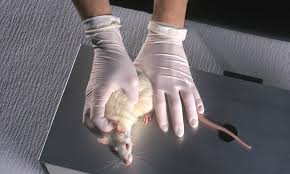
PETA Undercover - NIH Baby Monkey Abuse
How much do you know about animal testing?
view quiz statisticsPETA: Animal Testing in 60 Seconds Flat
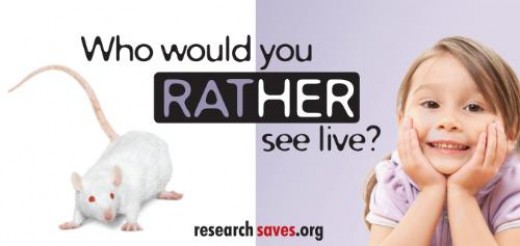
Ethical and Scientific Arguments: The Case for and Against Testing
For:
As can see from the picture above (an ad published by a pro animal research organisation), the argument in favour of live animal testing and experimentation (which I'll refer to as "vivisection" from now on, although not all procedures are surgical or involve cutting), centres on a very simple ethical argument - THE END JUSTIFIES THE MEANS.
Seldom do vivisection exponents seriously argue that vivisection does not hurt or harm animals -since lurid photos and video taken in labs makes it clear that many procedures do cause great pain and suffering to the test animal. But rather, the vivisectors and their supporters say that in order to advance medical research, cure diseases and save lives (or in the case of product testing, in order to establish our common products and medicines are safe for human consumption), animal experiments must be carried out. They say that there is often no other way to achieve the lifesaving objective, or to move scientific knowledge forward, without these procedures. Animal research is usually presented as an "Either/or" (forced choice) issue - either it's carried out, or there are no necessary cures or medical advances. Seldom is any kind of compromise solution suggested.
In terms of the direct scientific justification for using animals rather than humans, the 'pro' camp says that the animals used are sufficiently similar to humans in their physiology and anatomy to provide scientifically meaningful results, while being sufficiently different in that they do not have higher reasoning capacity and therefore cannot truly apprehend the idea of suffering.
The pro-vivisection lobby accepts that it is unfortunate animals must be used for testing, but they say that the law and strict codes of practice (such as the need to have all research protocols approved by Ethics Committees) protect animals from unnecessary suffering, and which incorporate and reflect the principle of the "three Rs" ("Replacement, Reduction, Refinement"). These principles must be applied to all justification for animal testing, and means that where possible, researchers must find alternative testing methods, and reduce the amount of animal testing done. They must also refine existing techniques to reduce the numbers of animals required, and the duration and level of suffering those animals must endure.
They also say that reviews and inspections by research accreditation and licensing bodies protect animals from abuse and unnecessary suffering in research.
Against:
The case against animal testing is primarily an ethical argument -that it is morally and ethically unsound and unacceptable to use live animals for experimentation and testing relating to human needs or desires, because animals can experience pain and suffering, and cannot consent to these procedures. The type of argument varies widely according to the beliefs of the person or group putting it forward, but most anti-vivisection groups argue either that animals have rights (as humans do) or that they are in need of human protection and care, and that any testing on them is unjustified "species-ism" (the belief that humans as a species are morally and intellectually superior to other species).
Opponents also argue (convincingly in my view) that testing and experimentation rests on a logical contradiction or paradox -that on the one hand, animals are similar enough to humans to justify the effectiveness of testing and experiments, but on the other hand, are different enough to justify being used, rather than humans, for these purposes. It just seems too "convenient" to justify animal testing in this way.
However there is also an effectiveness argument against animal testing (and in many ways, because of the failure of the 'ethical' argument to stop animal testing, animal rights groups have in recent years come to rely more on the 'effectiveness' argument to stop testing). They say that test results from animals cannot safely be extrapolated to humans, because of the vast differences in the way animals and humans function, and respond to various substances and processes.
A common accusation leveled at the animal research industry by anti-vivisectionists is that the industry is fuelled by money and greed, and this is what keeps it going, despite dubious results and effectiveness. Examples cited are the huge amounts of money involved in breeding and selling research animals to labs (including animals specially genetically modified for research purposes), and the fact that universities and other research institutions often use a large proportion of the grant money they get for performing animal research, on other funding initiatives (such as buildings, maintenance, and other programmes). Thus they have a vested interest in continuing animal research.
The Evidence (for and against)
The evidence? Let's look at the two main arenas for animal testing - medical research, and product/medicines safety and efficacy testing.
Efficacy in medical research
Proponents of vivisection point to medical advances such as the Polio vaccine, which was developed from experimentation on monkeys, important discoveries about cancer causing genes and molecules were derived from research on mice and rats, experiments on monkeys are teaching us about possible cures for neurological diseases like Parkinson's and Alzheimers (such as 'deep brain stimulation', which was pioneered on primates), and insulin for diabetics was discovered from tests on dogs which had diabetes.
More recently, the testing of new breast cancer drugs in mice led to the discovery of Herceptin, a drug now used for metastatic breast cancer (and mice are being used to develop other cancer drugs). Tests on dogs and pigs have led to developments in heart valve replacements, a TB vaccine was developed using guinea pigs, and the list goes on.
Whether alternatives were (or are) available is a moot point, but the pro-testing lobby argues a firm "no". They say that much of the medical research involving animals is what's called "basic research" (known elsewhere as "greenfields" research). What this means is that a researcher will perform a test or experiment on an anatomically similar animal system (such as a cat's eyes, a primate's brain, a mouse's genes, or a dog's heart), not knowing exactly what results or knowledge will be yielded from that test. It's highly experimental, so there are no 'non-animal alternatives' for such tests at this time. It's this type of research that scientists fight most strongly to protect the right to perform, and much of it happens inside university labs, since sometimes an unexpected result will be very exciting, and will lead to a medical breakthrough.
Medicines and product safety and efficacy
The case for medicine and product safety is considerably less conclusive in terms of whether results are 'transferable' from animals to humans. Testing of new medicines on animals before they can be marketed is mandated by law in most countries, and testing of some products is also legally required in some countries (e.g. pesticides and some household products). Medicines testing became widespread after the global tragedy surrounding the use of Thalidomide in the late 1950s, as it was argued that had animal testing been mandatory, the problems with Thalidomide when used in pregnant women would have been detected much earlier, before so many handicapped children were born.
However the differences in physiology (which product toxicology tests rely on) between animals and humans mean that animals are often given much higher 'doses' of a drug or substance than a human ever would be. Also in some prominent (and very alarming) cases medicines have tested as safe on animals, and then have been found to harm humans (e.g. Vioxx, an anti-inflammatory painkiller manufactured by Merck, Sharp and Dohme, which was found to be safe but then withdrawn after 5 years on the market as it was found to double the risk of heart attack and stroke in humans). Despite having been tested extensively on animals and approved by the USFDA for release to market, Vioxx caused 60,000 deaths before it was finally withdrawn in 2004.
There are many other examples the anti-vivisectionists cite: they say for example that Penicillin, while safe for humans, is toxic to guinea pigs. Aspirin is poisonous to cats. Further, statistics from the FDA show that roughly 95% of all new drugs formerly tested on animals and found to be promising as potential cancer treatments in humans, are not then found to be effective in human clinical trials. Similarly, 80 vaccines for HIV have been tested and found to be effective in chimpanzees (a very close genetic relative to humans), and yet have not found to be effective against human HIV infection.
There are many reasons for such unreliability, they say. Not only are animals very different from us anatomically and genetically, but the stress that they are subjected to during testing, and the harm they suffer from repeated tests, renders many results unreliable.
Further Reading
For further reading from organisations actively supporting and campaigning for animal research, go to:
* Understanding Animal Research (formerly the 'Research Defense Society')
* Foundation for Biomedical Research (UK and USA)
* American Association for Laboratory Animal Science
Organisations campaigning against animal research:
* People for the Ethical Treatment of Animals (PETA)
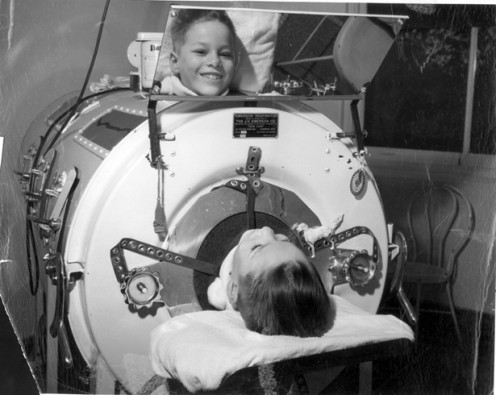
Are there alternatives to animal testing?
One of the key issues determining whether animal research continues to take place, may be the availability of viable alternatives. Some of the emerging technologies are:
- in vitro (test tube) test methods
- computer models and simulations
- to assess skin irritation, reconstituted human skin can be used (called EPISKIN)
- stem cell and genetic testing methods
- non-invasive imaging techniques such as MRIs and CT Scans
- microdosing (in which humans are given very low quantities of a drug to test the effects on the body on the cellular level, without affecting the whole body system).
Limitations on alternatives
Some claim these methods are not true alternatives to animal testing, because simulations use data from prior animal experiments and cell cultures often require animal derived products, such as serum or cells. Others say that they cannot replace animals completely as they are unlikely to ever provide enough information about the complex interactions of living systems. There are also limits on what alternative tests can disclose. For instance, while microdosing produces important information about pharmacokinetics and pharmacodynamics it does not reveal information about toxicity or toxicology.
Microdosing process
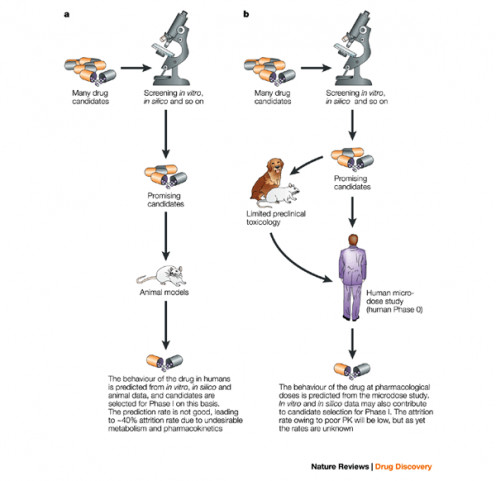
The end excuses any evil
— Sophocles (in 'Electra')How do the arguments stack up?
Amongst all the rhetoric and noise of the opposing views on animal testing, it's hard to distinguish fact from fiction; myth, from reality. One thing is certain though: animal testing rests on a wholly "consequentialist" ethical view -that the end (safe medications, and advances in medical research), justifies some very unsavoury means - killing, maiming and torturing animals (even if such treatment is not deliberately cruel).
These very same arguments have been used to justify a variety of appalling atrocities in the past - the Nazis' treatment of the Jews, for example, and medical experimentation on prisoners and the disabled. In ancient societies, it justified human sacrifice as appeasement to the gods. It's been used to justify wars, and 'collateral harm' to civilians caused by invading forces. It's used to justify illegal actions such as collection of tainted evidence to convict a known criminal.
If there are no firm, unmoveable, moral absolutes governing what humankind may justifiably do to further our own interests, then it becomes a slippery slope toward moral ambiguity, and eventually, moral anarchy, where almost anything goes if the objective is important enough. Here are some important questions animal research proponents should be prepared to answer, before strapping an animal into restraints to perform a test or experiment on it:
1. For what purposes is testing acceptable? What level of benefit, or harm reduction, must be reached, before it becomes 'justified'? Must it potentially save a life, or is it enough that the remedy being tested improves our quality of life, comfort level, or appearance?
2. Why do we test on animals? Is it because they lack the ability to tell us they do not wish to be subjected to tests? Is it because they lack higher reasoning power? We should have the answer to this question.
3. Is it morally acceptable to use things that we must test on animals for safety, simply because we can?
4. Would it ever be acceptable to experiment on humans without their consent? If not, then why do we think it's OK to test on animals? What are the differences that justify our making this distinction?
Most importantly, the medical research community and the industries which rely on animal testing must actively work together to look for cost effective alternatives to animal testing, as a matter of great urgency. Those engaging in this type of research and testing in a hands-on role, must never become immune to the suffering of the animals they work with, and must continually examine their conscience, and look for alternatives. The cost of this research is simply too high, and stains our legacy as a species on this planet.

